In the last chapter I explained how sailboats keep out of the way that have the wind from different sides. One boat has the wind from starboard and the other one from port side. Do you still remember … ? Right, the boat that has the wind from port side has to give way. The boat that has the wind from starboard has to stand on. “Sail left has right!”
But what happens when both have the wind from the same side? The “International Regulations for Preventing Collisions at Sea that apply in this case say: “ … when both have the wind on the same side, the vessel which is to windward shall keep out of the way of the vessel which is to leeward.” (Indication of source: United States Coast Guard, Navigation Rules)
In short this means: Leeward before windward. Just like in the alphabet. The L of leeward comes before the W of windward. But what does that mean now? On my figures the wind always comes from the top. So where is leeward and where is windward … ? Right, windward is there where the wind comes from. This is the side of the boat where the helmsman should sit. Leeward is there where the wind blows to. It is the side of the boat that the mainsail is on. (Figure 118)
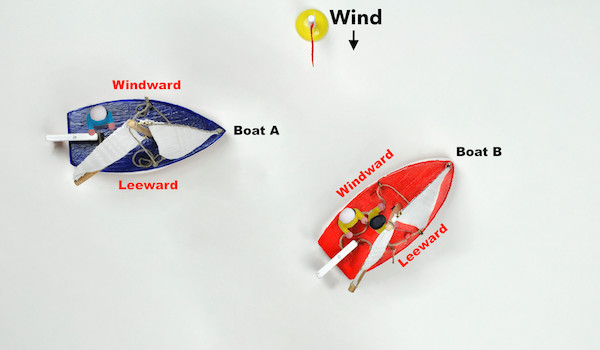
Figure 118: Two sailing vessels are approaching one another with risk of collision and have the wind from the same side. Boat A is to windward of Boot B and has to give way.
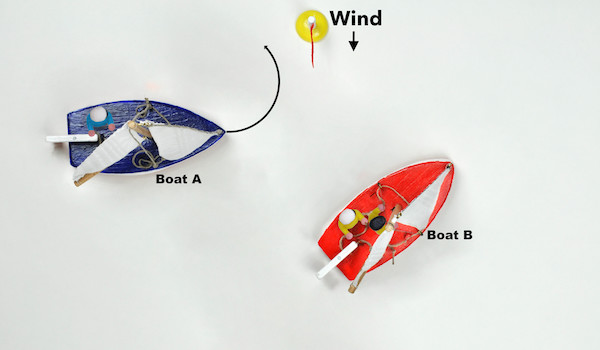
Figure 119: Boat A can keep out of way by tacking …
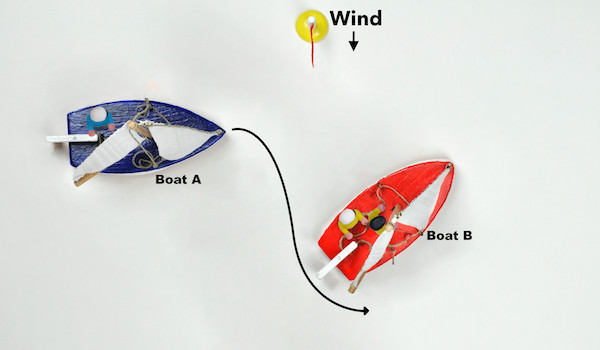
Figure 120: … or going through behind the stern of boat B.
But what is the situation with the two boats in figures 121 till 123? Who is leeward and who is windward? Who has to stand on and who has to give way? Look at the figures, think about it, and then read the solution further down in the text.
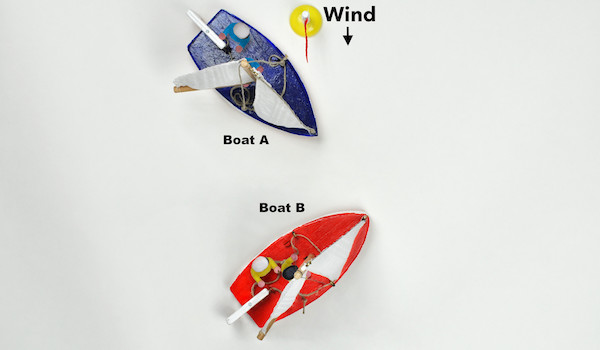
Figure 121: Which boat has to give way and which boat has to stand on?
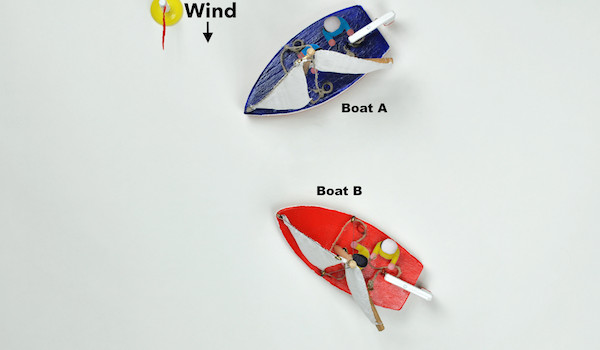
Figure 122: Which boat has to give way and which boat has to stand on?
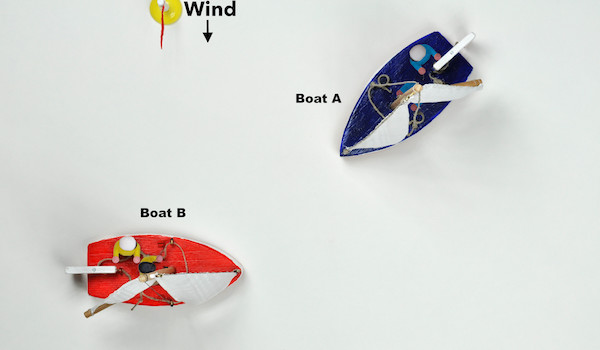
Figure 122: Which boat has to give way and which boat has to stand on?
In figure 121 … ? Boat A is to windward and has to give way! In figure 122 … ? Again boat A is to windward and has to give way! In figure 123 … ? Ha! That was a test! Again boat A is to windward. But it has the wind from starboard, while boat B has the wind from portside. Therefore boat B has to keep out of the way.
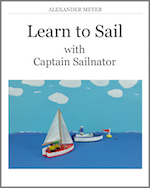 This online sailing course has also been published as ebook and paperback. For more information click here!
This online sailing course has also been published as ebook and paperback. For more information click here!
You can download the Ebook for example at:
iTunes UK & iTunes US | iBooks for iPad and Mac
Amazon.com & Amazon.co.uk | Kindle-Edition
Google Play | for Android
The paperback is available for example at:
Amazon.com | Amazon.co.uk
So if we sail and discover that there might be the risk of a collision we first have a look up to our mainsail. (Let us say it is on left side.) The way to remember was: “Sail left has right!” Next question is: On which side is the “opponent’s” sail? If he has it on the right side (starboard) we have to stand on and he has to give way. If his sails are on the left side (port side) too or both have them on the right side the question is: Who is to windward and who is to leeward?
Roughly we can say: If the helmsman sits on the correct side of the boat (windward) then a windward boat should be on his side of the sails. Or even behind his back. Is the “opponent” leeward he will roughly be behind the sail. Who had to stand on again… ? Right: The L of leeward is before the W of windward in the alphabet. The leeward boat stands on, the boat to windward gives way.
But there is one special case: “If a vessel with the wind on the port side sees a vessel to windward and cannot determine with certainty whether the other vessel has the wind on the port or on the starboard side, she shall keep out of the way of the other.” (Indication of source: United States Coast Guard, Navigation Rules)
But how do we get into such a situation? The “opponent” has to be in front of us on port side sailing downwind. (Figure 124) He then would be windward and would have to keep out of the way if he would have the wind from the same side as our boat. But sailing downwind he has the possibility to pull the mainsail to one side or the other.
We cannot see on which side the mainsail is with certainty in darkness. But this is a beginner’s course for people who have not sailed yet in the dark. Before we can do that we would have to learn about a boat’s lightning. Another uncertain situation is when the opponent approaches on port side sailing downwind with a big spinnaker in front of the boat that covers the mainsail. When we are not sure on which side the mainsail is in this case it can be assumed that it is on port side. So we have to give way.
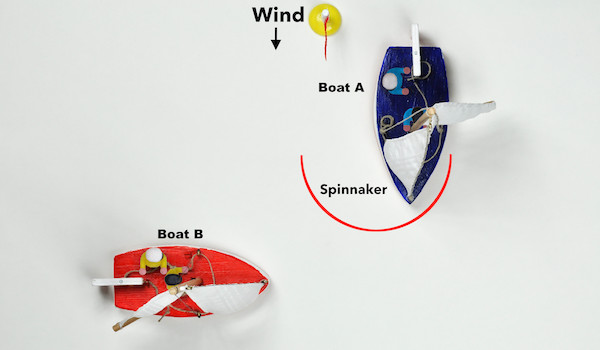
Figure 124: Boat B cannot see, if boat A has the mainsail on starboard or on port side behind the spinnaker.
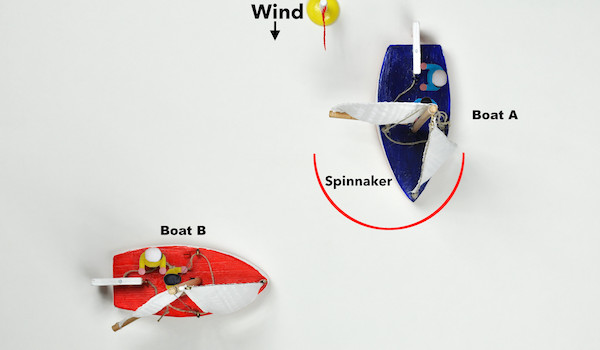
Figure 125: Due to this Boat B has to assume that it has to give way.
We learned till now about the rules of the road for sailboats: Sail left has right! If both have the wind from the same side the rule is: Leeward before windward! If I have the wind from port side and cannot see on which side the “opponent” has the wind, I give way.
In the third and last part of the “give-way rules” I will explain how a sailboat has to act when it overtakes another sailboat.
← Last chapter | Next chapter →
All chapters: Technical Terms | The theory behind sailing |Close-hauled | Beam reach | Broad reach | Sailing downwind | Tacking | Beating | Quick-turn | Sailing up head to wind | Man overboard | Jibing | Heaving-to | Leaving the dock | Berthing | Rules of the road 1 | Rules of the road 2 | Rules of the road 3 | Reefing | Capsizing